Activated carbon filters are becoming increasingly popular in the smoking community. Rightly so! They represent a simple but very effective method of reducing harmful substances in smoke to a minimum. In this way, they contribute to sustainably protecting the health of the consumer.
Numerous variants are now on the market, but what are the differences? We draw a big comparison between the well-known ceramic filters and the new discovery of recent years with a cellulose closure.
Structure and functionality of activated carbon filters
First of all, we need to define what makes an activated carbon filter a good activated carbon filter. Because they are all specially developed to give the consumer the most pleasant and less pollutant smoking experience possible. Filled with activated carbon, which is used in the form of pellets, granules or a layer on a carrier material, the aim is to achieve the highest possible filter result. It's the inner values that matter.
The activated carbon is produced naturally or by treatment with vapors or chemicals, which creates pores that offer large surface areas. Under the microscope it looks quite moon-like. These pores allow the activated carbon to adsorb chemicals and pollutants contained in smoke to their surface. This means that the finer the activated carbon, the higher the filter result for the same amount (since it has more surface area).
Adsorption is a process in which pollutants stick to the surface of the activated carbon and are therefore removed from the smoke. This process reduces harmful substances such as carbon monoxide, nitrogen oxides and tar.
The efficiency of an activated carbon filter depends largely on the quantity, form and type of activated carbon. Here it is important to differentiate again between stone and coconut activated carbon. The latter shows significantly improved filter results. This is held in place by ceramic fasteners with perforations or with open pores Cellulose caps.

Ceramic vs. cellulose caps – which is the better choice?
In order to come to a meaningful result, this question must be viewed from several perspectives.
1. Reduction of pollutants
The ceramic version filters with coarse activated carbon pellets which, as we learned above, can absorb fewer pollutants. However, due to the design and to avoid pieces of activated charcoal in the mouth, this cannot be solved in any other way.
In addition, it is difficult to avoid inhaling activated carbon dust while pulling. This quickly leads to an adulterated taste and higher levels of pollutants.
The cellulose variant, on the other hand, does not depend on any perforation and can therefore use the activated carbon much more finely. This ensures higher filter power with less activated carbon. In addition, the cellulose caps on both sides filter activated carbon dust and other larger pollutants.
The taste is not distorted.
Active cellulose filter 1. Ceramic filter 0.
2. Draft & smoking behavior
Here too, the ceramic filter starts again.
At first glance the draft seems to be almost unchanged from the “Tip”. At second glance, however, the view is somewhat more sobering.
Activated carbon has the property of liquefying at high temperatures. These exist in the filter at all times - by pulling on the mouthpiece, the holes in the ceramic sleeve quickly close. This ensures a significantly reduced draft, right up to complete closure. If it gets into your mouth when you pull too hard, the desired smoking experience is a thing of the past.
Ceramic filters do not have heat protection, so the closer you smoke to the filter, the smoke can be quite hot. In the best case scenario, this can lead to dry, chapped lips.
The active cellulose filter -
The open-pored cellulose closures are real heroes of every consumer. Not only do they capture the liquid activated carbon without clogging, they also ensure a cool flow from start to finish even if the filter is short.
Because your lips are there for kissing.
Active cellulose filter 2. Ceramic filter 0.
3. Environmental impact
First of all, it should be said that the correct disposal of each filter is a prerequisite for this comparison. Due to the pollutants trapped in the filter, environmental pollution cannot be avoided if disposed of negligently. But let's now look at the production and material properties.
In addition to a cardboard tube and designer paper, the ceramic filter also uses the ceramic that gives it its name. This is one of the oldest materials in human history. Essentially described as a natural product, ceramic production still requires enormous amounts of energy today because the ceramic often has to be fired or sintered for 6-12 hours at 800°C - 1400°C. With it, any reference to environmental neutrality in production is also destroyed. As current studies show, what is particularly harmful to the environment is the fact that in the mass production of ceramic products, fossil fuels are almost always used to fire the ovens - which results in environmentally harmful emissions. In addition, ceramic is not biodegradable - this can easily last a human life or even entire generations.
Cellulose is different. To be more precise, we are talking about cellulose acetate here. This is a biodegradable, bio-based plastic that can be used, for example, to produce sustainable packaging for food. Accordingly, it also ends up in municipal waste. Cellulose acetate (abbreviation CA) is classified as a thermoplastic, but is more of a modified natural material. During production, cellulose, usually in the form of natural pulp, is mixed with acetic acid and acetic anhydride esterified. This process is completely compatible with nature.
Active cellulose filter 3. Ceramic filter 0.
Of course, other factors such as price, brand reputation and personal preferences also play a crucial role when assessing and comparing two product groups. This comparison should be the basis for this.
Conclusion
The active cellulose filter heralds a new phase in modern smoking - be part of the revolution.








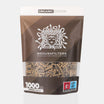
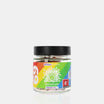









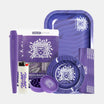




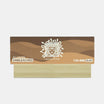








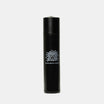

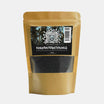





Leave a comment
This site is protected by hCaptcha and the hCaptcha Privacy Policy and Terms of Service apply.